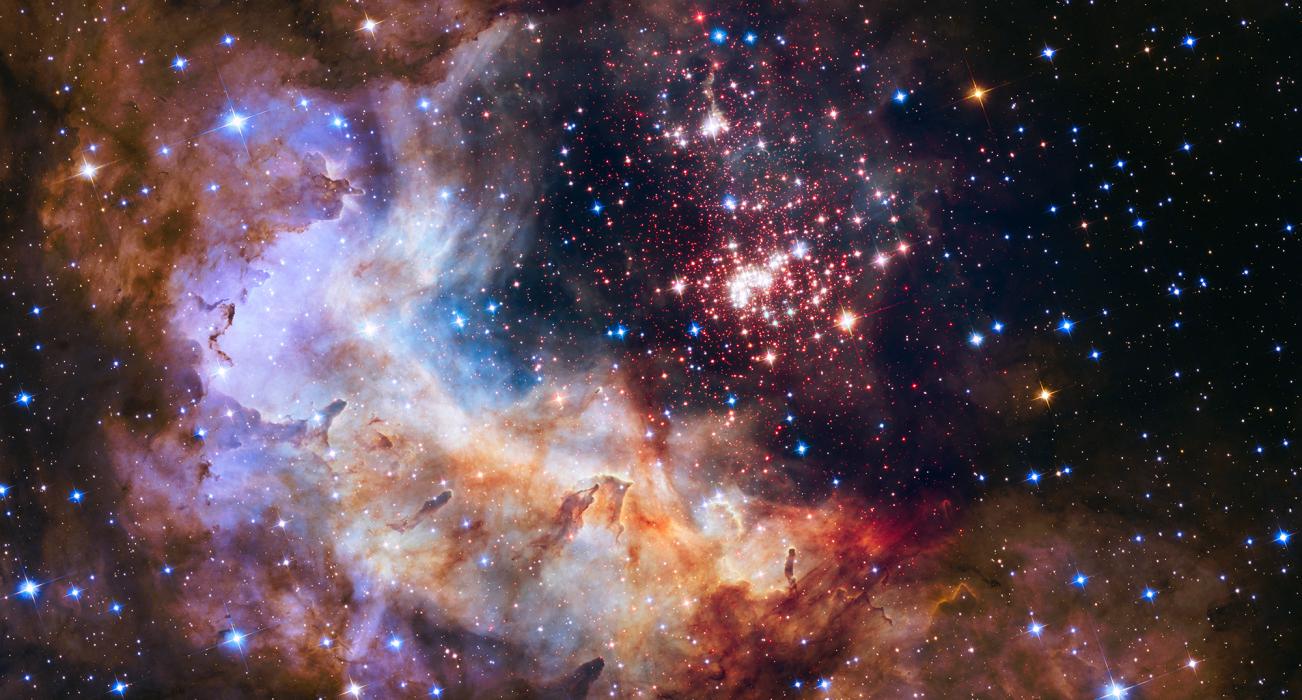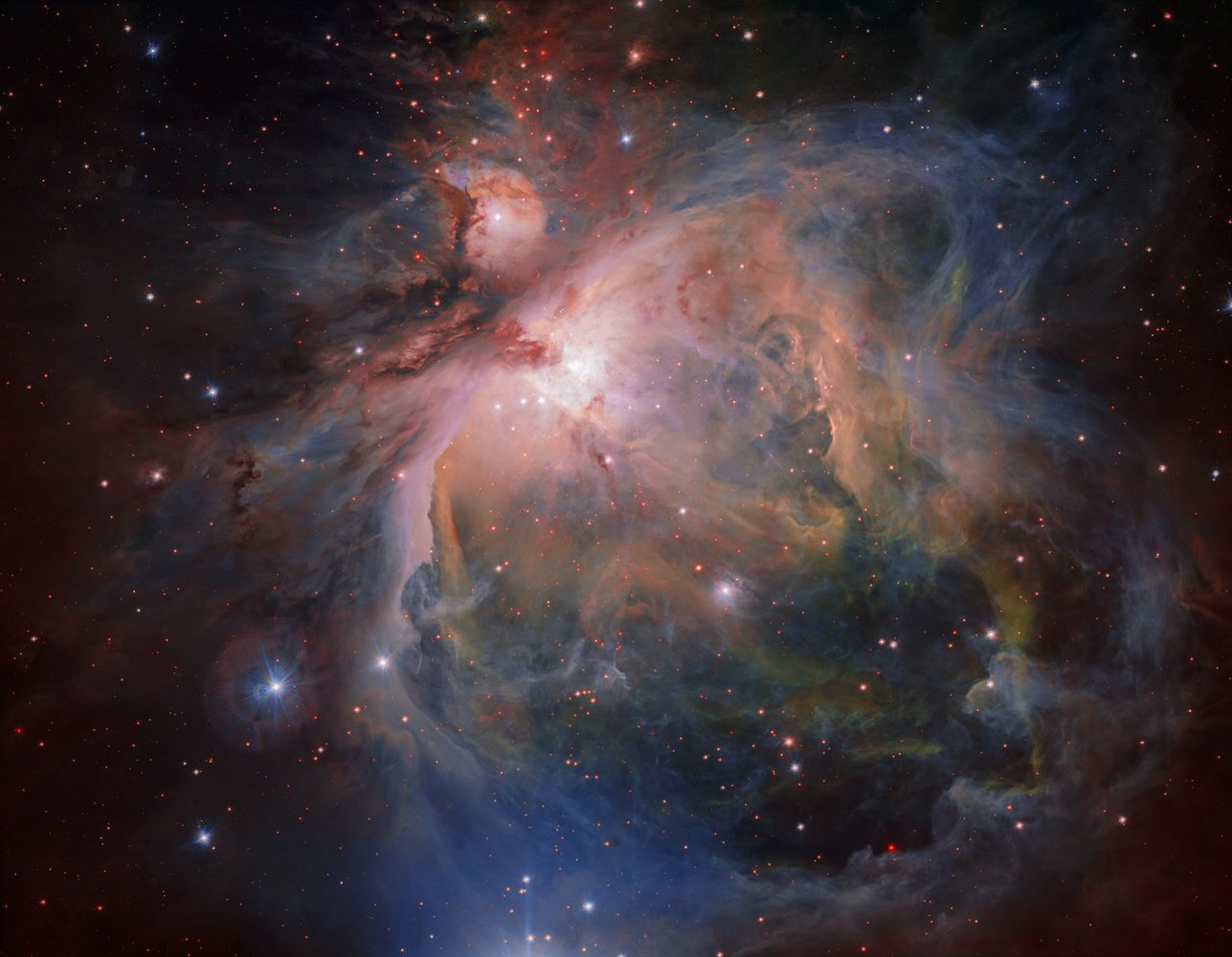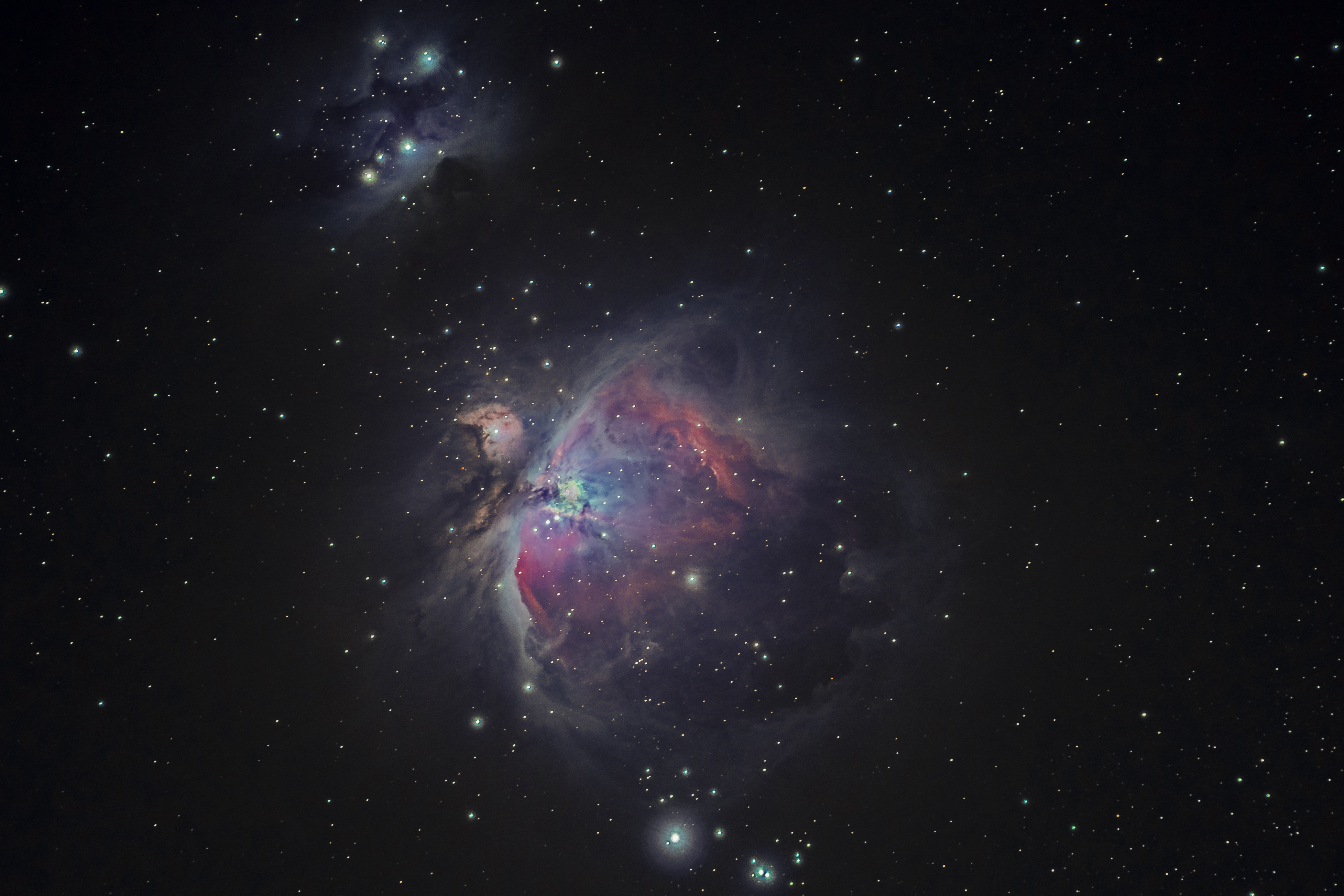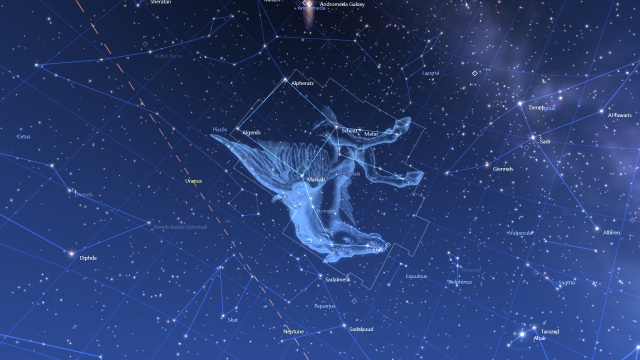
Astronomers have a pretty solid idea of how stars are born. They begin within the dense, cold dust of an interstellar cloud such as this one. They heat up and get more luminous as they contract, and then drop in luminosity as they continue to contract steadily toward the main sequence.
I’m going to spend at least the next ten or so posts talking about the main-sequence portion of a star’s life cycle. Basically, we’re talking about a star’s adulthood.
You know what, while we’re at it, why don’t I draw up an analogy between a star’s life cycle and that of a human:
- When a human is a mere fetus developing within its mother, a star is a protostar.
- We say a star has been “born” when it crosses the birth line—basically, satisfies certain expectations for its temperature and luminosity for its specific mass—and becomes visible.
- After that, a star steadily approaches adulthood. A “child” star is referred to as a Young Stellar Object (YSO) or a pre-main-sequence star.
- An “adult” star is one that has begun to fuse atomic nuclei in its core for fuel. At this stage, the star has reached the main sequence.
- When a star runs out of fuel, it leaves the main sequence. We’ll cover this evolution in depth very soon.
I explained this process in depth in my last post. But I also posed the question: how do astronomers know all this? Where’s the evidence?
Continue reading


